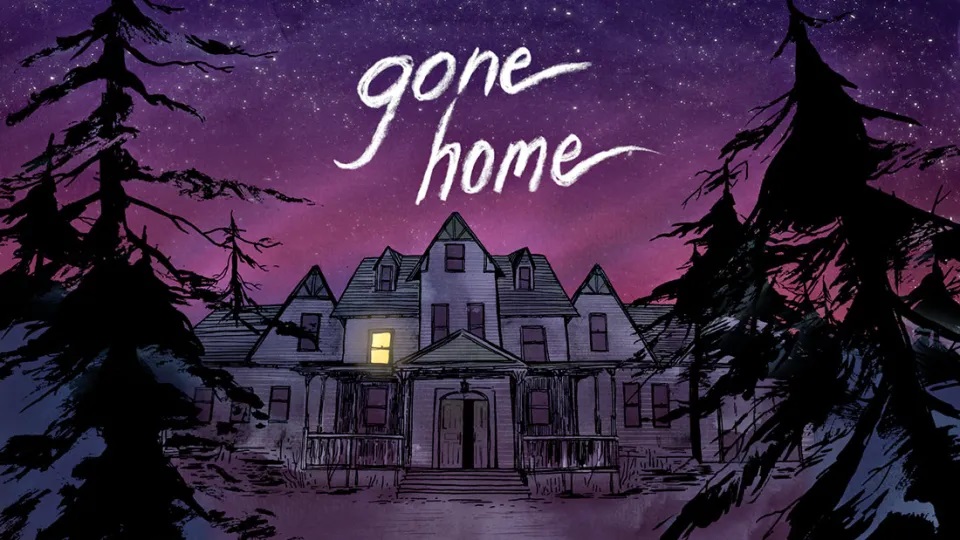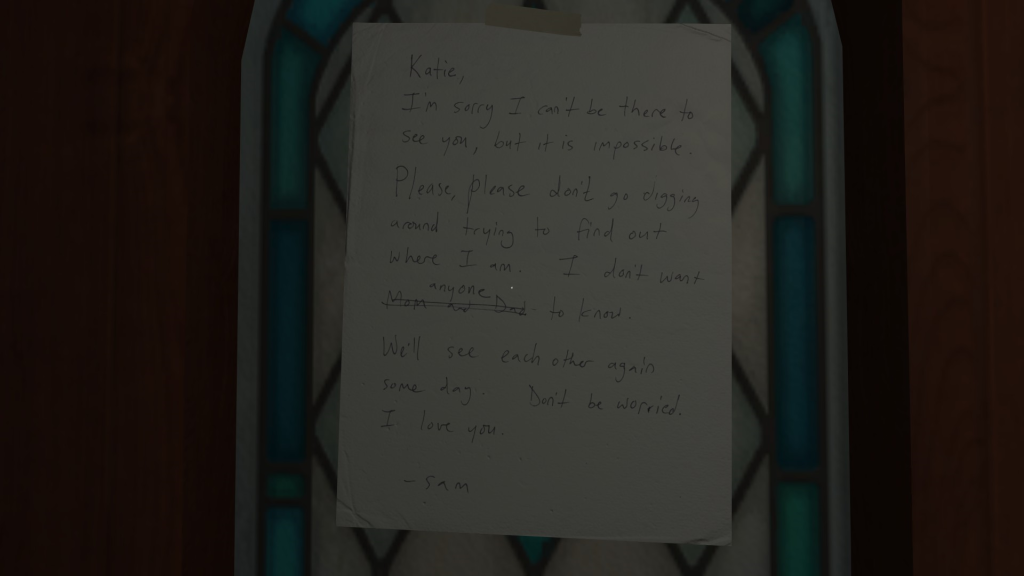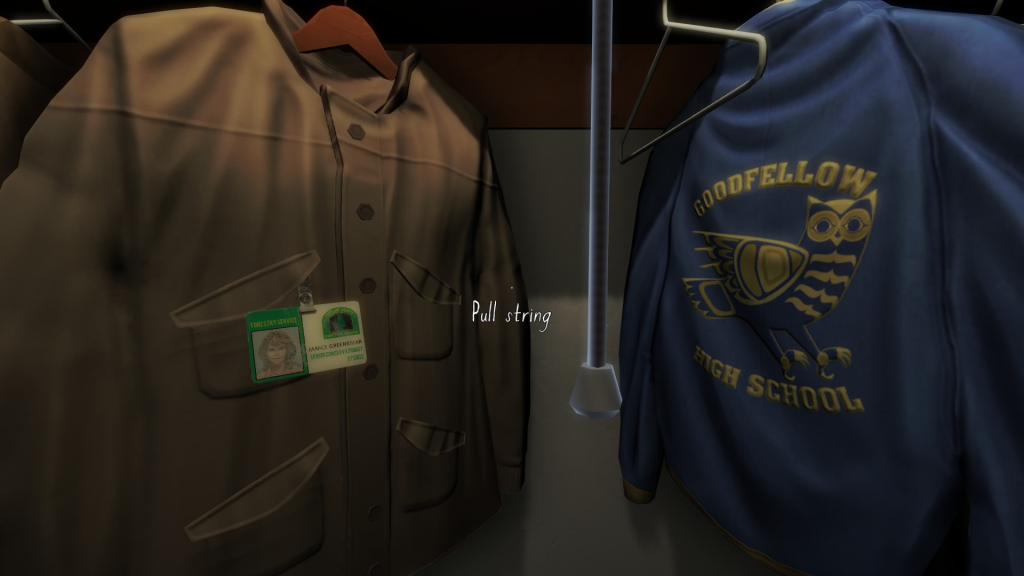
Game: Gone Home
Developer: Fullbright
Genre: Adventure Game/Walking Simulator
Released: 2013 (PC), 2016 (Playstation 4, Xbox One), 2018 (Nintendo Switch)
Blaugust 2022, day 12. I have another game review in store, but not in the classic gaming idea. See, not all games need to ask for a lot of button presses, nor does every game need action to work. Sometimes you can just experience things in a videogame without doing much more than walking around and actually … well, experience things. A game genre known for serving exactly that purpose is the so-called “walking simulator”, both in regard to what is mostly done in the game as well as a slur by people that disregard them as actual videogames. Now, I do not want to open the debate about videogames as an art form and all that, but the game at hand, “Gone Home”, was in my opinion a nice way to tell a story without asking the player for that much really. So, here is the article for a game in which button presses are secondary, and taking in the surrondings is key. Oh, and there will be spoilers; and I mean it, since there are basically two reveals in the game and I will spoil them both in this article.

You are playing as Kaitlin Greenbriar, nicknamed Katie, who comes home from a one-year stay in Europe one evening during the 90s. Actually, while she does come home, it is not the place where she grew up since her family moved house while she was abroad. But, nonetheless, she arrives at her new home in an old house in the forest. It is already dark outside at the point of your arrival since it is way past midnight and with the rainstorm raging during that night you can almost feeling a bit of relief for your character finally arriving at a dry place. However, despite the amount of time it has been since you were here, no one is there to greet you. The house is plunged into darkness and the letter stuck to the door from your little sister Sam is not really giving you a good feeling about the entire affair. Still, you have come home, so it is only right to step into the house and get accustomised; or even relive some of the memories you made in this place during earlier years. With that, our journey through the darkened house begins…
The front door is locked, but with a little bit of searching you are able to find the hidden housekey. The door swings open and the lights in the front hall begin to flinker without you pressing a switch, just as if they were wakened by your arrival. You also imagine hearing strange noises, sometimes footsteps, at other times a door handle being pushed. If you have played any videogames before, your senses should be ringing alarm bells at that stage: A dark house, a character with no real way to protect herself, a storm brewing outside during the night, and pretty much no way to progress other than entering the house and exploring what it contains is ticking all the boxes for a horror title. On top of that, the answering machine has some strange messages: While the first one is simply repeating Sam’s name, the second voice message contains a woman certainly in distress and telling Sam that they need to talk; and the third is Katie, your character, telling about her arrival on June 6 late at night, the very scenario you are playing out at that very moment. In fact, the developer is fully aware of the atmosphere they have set up. They even play with your expectation by introducing some plot about ghosts and the potential of someone living in the house that might not have fully passed on. None of those expectations will ever be met, since “Gone Home” is not a horror game, even if it plays with the presentation of one.
No, “Gone Home” is actually more of a walking simulator. It is less of a game and more of an interactive way to tell a story. Now, you should be aware of that before playing the game which would since that way you know what to expect and whether you are up for it; which is probably the reason why so many of the game’s reviews on GOG.com expected more gameplay. However, telling you so before you pick it up kind of ruins the horror game joke, which is certainly something that the developers would not want to risk. But, to be entirely honest, you should actually feel a bit more at ease in terms of horror expectations as soon as Sam starts talking to you as the narrator. That’s right: Over the course of the game, your character’s little sister tells you all that has happened since you were gone.
And it turns out that she has a lot to tell: Moving from your old neighborhood to the house in the woods was certainly not easy for the teenage girl, but it obviously also meant that she has to go to a different school and acclimate herself with her new surrondings. With her sister as her best friend gone for a long time, and the difficult teenage phase of her life being further complicated by her parents not getting along anymore and both also having their own fair share of problems, you can imagine how bad it was for Sam. Which is why she decided to keep a journal: If she was not able to tell her experiences to Katie in person, she at least wanted to tell the story to her in proxy. And those lines are exactly what we as the player are presented over the course of strolling through the house.

What “Gone Home” does really well is explaining certain things with its environment. Oh sure, Sam has a lot to say since her year without Katie sure has been eventful, but just by looking around you can find out who exactly is living in the house. Opening a door in the entry hall will open the wardrobe, which has some clues ready to find for you. The school that Sam goes to would probably be the “Goodfellow High School”, but the jacket on the left definitely shows Janice Greenbriar, the mother of Sam and Katie, working for a forestry service. And while we do not yet know about the father, a look at the bathroom in the entry hall reveals a magazine for authors with tips and tricks how to get your works published, which immediately points towards someone in the house having a knack for writing work.
It is not like the puzzle pieces are exactly hidden, since you have plenty of opportunities to understand who lived and is living in the house and what those persons do since clues do repeat themselves. The death of a man named Oscar Masan, the person who lived in the house on 1 Arbor Hill back in the day, is written about in the orbituary that also mentions a certain Terrance Greenbriar as his nephew; the step towards that being the father of Sam and Katie and also the heir to the house is not that far-fetched. The reason might be that Katie’s father probably wanted a change of scenery in order to help his writer’s block. But with letters telling him that he would be fired from his job if he did not deliver decent work, a number of thrown-out manuscripts for a sci-fi novel, and a not-so well-hidden whisky bottle on top of his bookcase might also hint at a more serious problem. Needless to say that even the mother of the house is unhappy with the situation and might have seen someone at the side. But in fact, that is all stuff you can occupy yourself with if you want to do some detective work since after about a third of the game it becomes clear that the sole focus lies on Sam and her story, with the premise being as simply as finding another soulmate in a girl that she met and becoming more than just friends.

Like I said at the start of the article, this is long past spoiler-free territory. But the game really becomes a small discovery tour through the old house with clues to find everywhere and Sam giving commentary on how life is treating her. In the end, the entire experience is about a coming-of-age and, I guess, also a coming-out story; and to be honest, it did work its magic on me even when I replayed it for this article. The one thing to say about “Going Home” is manage your expectation: There is no shooting, no horror, no fighting, no action, just a girl coming home and finding out what she has missed in her year of absence. And while that worked for me, I can understand why people would say that it is not their cup of tea. If you complain about the walking speed of your character in this game, I would strongly suggest not playing any further because chances are that your need for adrenaline is not catered to here. However, if you can work with the slow pace and the fact that the only real thing happening is story, then “Gone Home” is worth a look in my opinion; even though I am not sure that I would pay 12.49€ for it.

Nice review! As you know, I am endlessly fascinated with walking simulators as a way of telling stories, and I think the best way to approach them is as “playable” novels, for lack of a better word: They often present a closed narrative, but you get to experience it and figure it out, putting together the pieces, by way of exploring the game world. And I think it’s an extremely effective way to craft a narrative and make it feel more poignant and inclusive.
The two things that most interested me with Gone Home was how a) the game really manages to feel like open exploration, when it is actually quite linear and b) how it manages to maintain multiple character arcs for the different family members that twist and turn and still come to satisfying conclusions. I would definitely pay 12,49 € for this — in fact I think I did. And yet I agree that this kind of playable experience won’t be everyone’s cup of tea.
LikeLiked by 1 person
First off, thank you for your comment, appreciate it. “Playable novel” is actually a pretty good description and it would probably explain what you are about to do in the game a little bit better than “Walking Simulator” since that seemed to confuse quite a view people I read reviews of. But overall, I agree that it handles the multiple character’s stories very well even though there is an obvious focus on Sam for being the narrator. It makes exploration fun since you can piece together the situation of the family by looking for clues.
LikeLike
Pingback: Blaugust 2022 – Reflections | Cubic Creativity